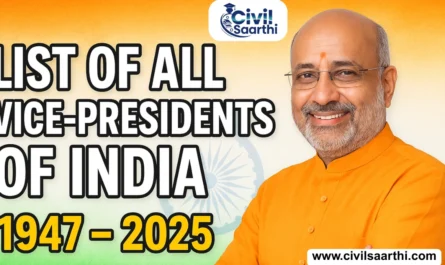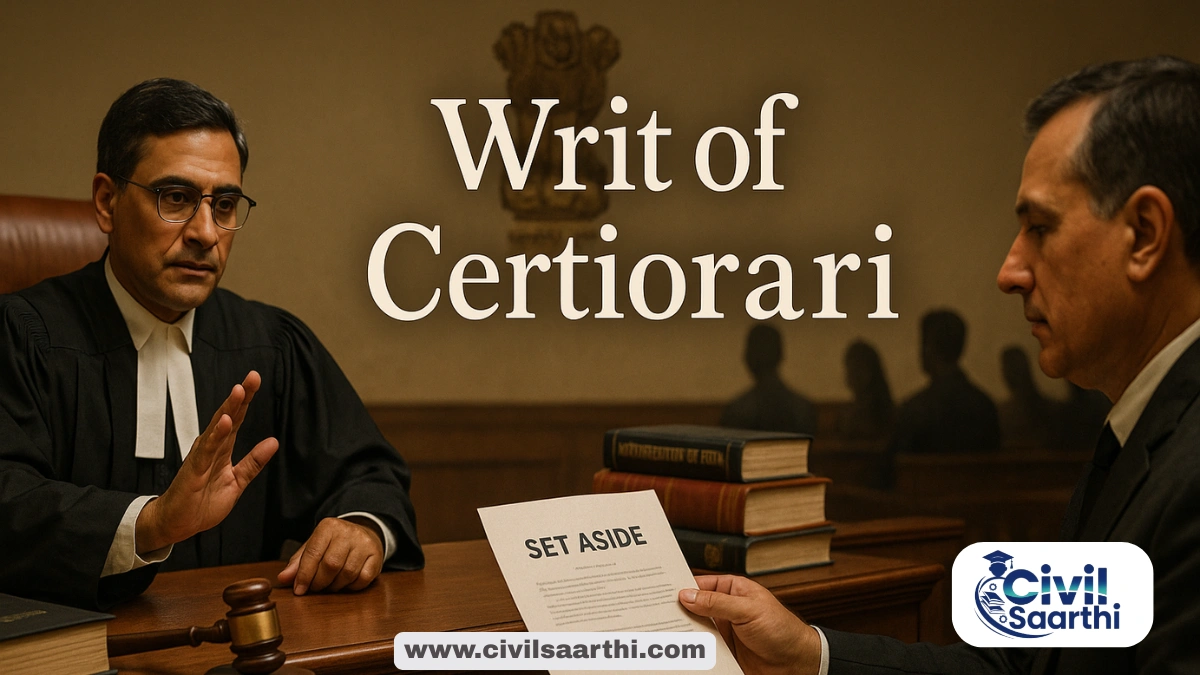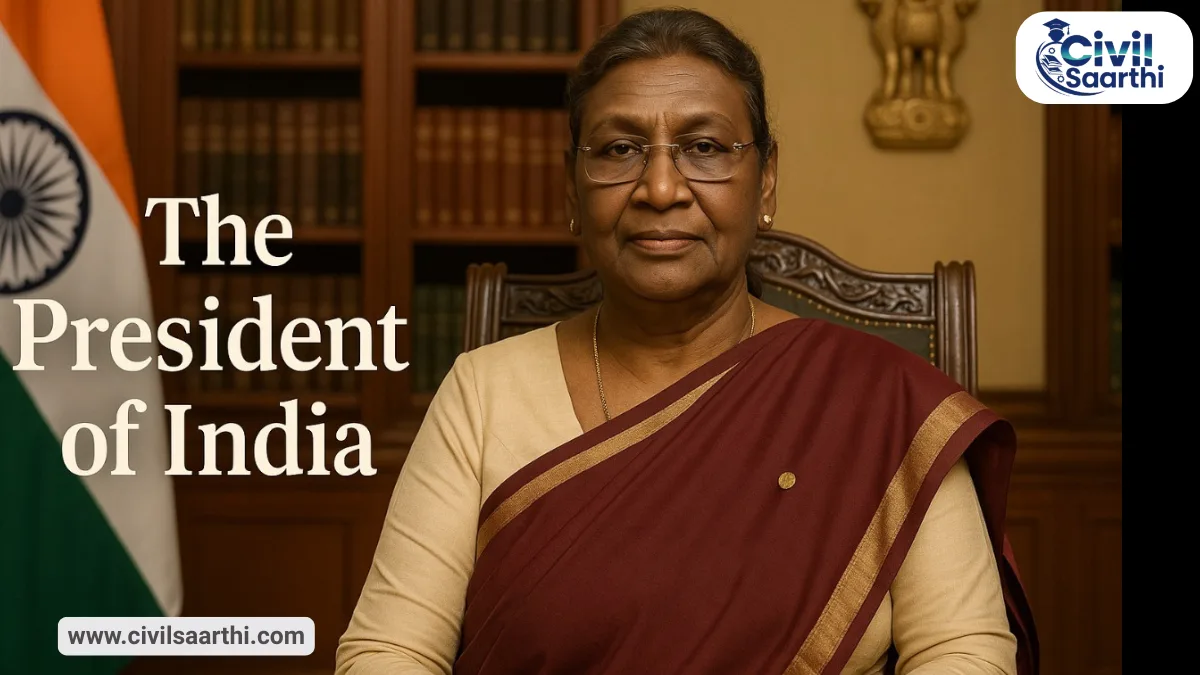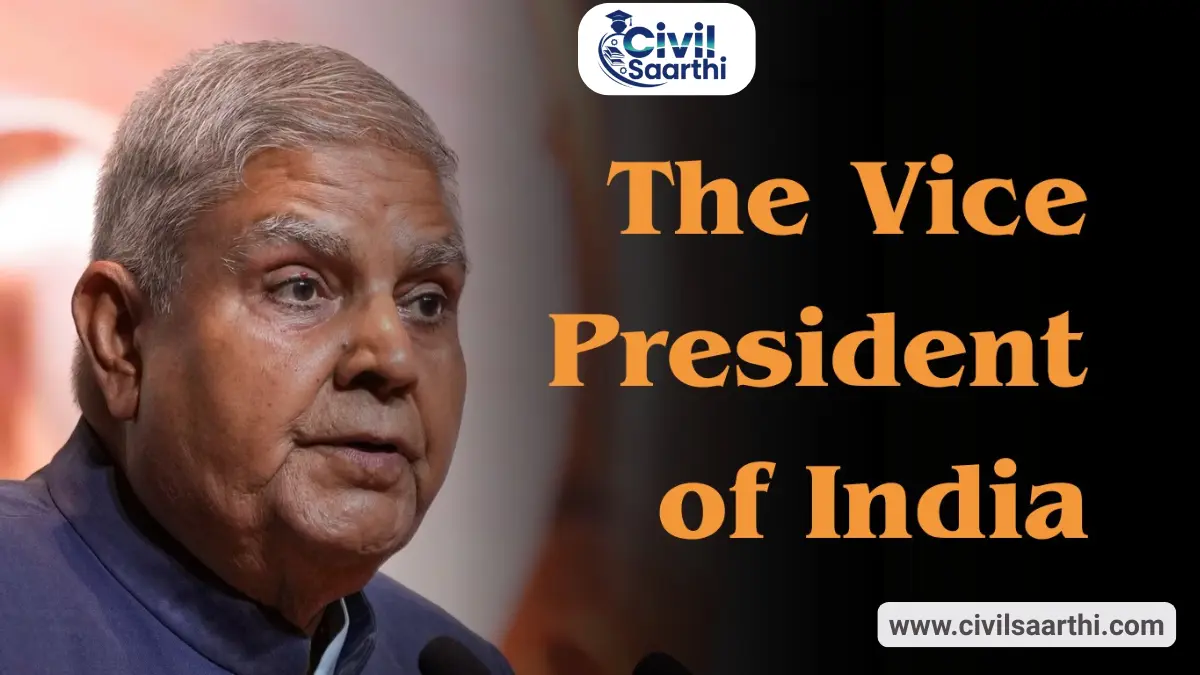The concept of Separation of Power Polity Notes helps in maintaining democratic integrity by avoiding power centralisation in a single authority. While India does not strictly follow the classical doctrine, it incorporates the essence of this principle through various constitutional safeguards and judicial interpretations.
The doctrine of separation of powers is a foundational principle in constitutional governance, ensuring a balanced distribution of powers among the three branches of the state: Legislature, Executive, and Judiciary. These three arms are expected to perform independently and check one another from becoming authoritarian.
Doctrine of Separation of Power Polity Notes: Overview
The doctrine of separation of powers is a fundamental principle in constitutional governance, aiming to prevent the concentration of power by dividing governmental responsibilities among distinct branches. In the Indian context, while the Constitution does not explicitly enforce a strict separation, it establishes a system of checks and balances among the Legislature, Executive, and Judiciary.
| Separation of Power Polity Notes: Overview | ||
| Branch | Function | Separation in India |
| Legislature | Law-making | Cannot interfere in judicial work |
| Executive | Law-implementing | Subject to judicial review |
| Judiciary | Law-interpreting and enforcing | Independent of both |
What is the Doctrine of Separation of Powers?
The doctrine of separation of powers entails the division of governmental responsibilities into distinct branches to limit any one branch from exercising the core functions of another. The intent is to prevent the concentration of power and provide for checks and balances.
- Legislature: Responsible for enacting laws.
- Executive: Tasked with implementing and enforcing laws.
- Judiciary: Charged with interpreting laws and administering justice.
Origin and Evolution of the Doctrine of Separation of Power
The concept of separation of powers has evolved over centuries:
1. Historical Origins
- Ancient Roots
- The concept traces back to Aristotle (4th century BCE), who in “Politics” identified three parts of government: deliberative (legislative), magisterial (executive), and judicial.
- He emphasized balancing these for good governance, but did not articulate a formal doctrine.
- Roman Law
- Roman governance reflected an informal division of authority among the Senate, Magistrates, and Assemblies.
- Though not doctrinal, this influenced early republican thought.
2. Enlightenment Era – Formal Articulation
- John Locke (17th Century)
- In “Two Treatises of Government”, Locke separated legislative and executive powers, seeing it as essential to liberty.
- He did not clearly separate judiciary, viewing it as part of the executive.
- Montesquieu (18th Century) – Classical Theory
- The modern doctrine was systematically developed by Baron de Montesquieu in “The Spirit of the Laws” (1748).
- He proposed complete separation of legislative, executive, and judicial powers.
- Montesquieu observed the British constitutional system, especially the balance between King, Parliament, and Courts, as a model.
3. Evolution in Practice
- United States
- The US Constitution (1787) adopted strict separation of powers.
- Each branch, Congress (Legislature), President (Executive), Supreme Court (Judiciary) has distinct powers and is independent.
- The system of checks and balances (e.g., veto power, judicial review) allows interdependence without subordination.
- United Kingdom
- Although Montesquieu admired Britain, the UK follows a parliamentary system where separation is not strict.
- The executive (Prime Minister and Cabinet) is part of the legislature (Parliament).
- The judiciary is now more separate after Constitutional Reform Act 2005, which created a separate Supreme Court.
- India
- India follows a functional separation, not rigid.
- The President, Parliament, and Supreme Court represent the three branches.
- Articles 50 (Directive Principles), 121, 122, and 211 reflect limited separation.
- Interference is prohibited, but checks and balances allow limited overlap:
- Judiciary can review executive/legislative action.
- Parliament can impeach judges.
- President acts on aid and advice of Council of Ministers.
Constitutional Provisions in India Regarding Separation of Power
While the Indian Constitution does not expressly mandate a strict separation, several provisions underscore the functional division among the branches:
- Article 50: Directs the State to separate the judiciary from the executive in public services.
- Articles 121 & 211: Prohibit discussions in Parliament and State Legislatures on the conduct of judges.
- Article 122 & 212: Bar courts from inquiring into legislative proceedings.
- Article 361: Grants immunity to the President and Governors from court proceedings during their term.
Interrelationship Between the Organs Vs Separation Of Power
Legislature and Executive
In India’s parliamentary system, there is an inherent overlap between the legislature and the executive:
- Council of Ministers: Drawn from the legislature, ensuring accountability.
- Legislative Oversight: Mechanisms like Question Hour, Zero Hour, and various committees enable the legislature to scrutinize executive actions.
- Ordinance Power: Under Article 123, the executive can promulgate ordinances when Parliament is not in session, reflecting a legislative function.

Judiciary and Executive
The judiciary maintains independence from the executive, yet certain functions intersect:
- Judicial Review: Courts can assess the constitutionality of executive actions.
- Presidential Pardons: Under Article 72, the President can grant pardons, a quasi-judicial function.
- Tribunals: Established under Articles 323A and 323B, these bodies often comprise judicial and executive members, blending functions.
Judiciary and Legislature
The judiciary and legislature interact within defined boundaries:
- Judicial Review of Legislation: Courts can invalidate laws that contravene the Constitution.
- Legislative Privileges: Legislatures have certain privileges, but these are subject to judicial scrutiny to prevent abuse.
- Impeachment Proceedings: The legislature holds the power to impeach judges, a process with judicial implications.
Judicial Pronouncements on Separation of Power
Several landmark judgments have shaped the understanding of separation of powers in India:
- Ram Jawaya Kapoor v. State of Punjab (1955): Acknowledged that while the Constitution does not enforce a strict separation, it delineates functions among branches.
- Kesavananda Bharati v. State of Kerala (1973): Established the Basic Structure Doctrine, asserting that separation of powers is a fundamental feature of the Constitution.
- Indira Nehru Gandhi v. Raj Narain (1975): Reinforced that the separation of powers is integral to the Constitution’s basic structure.
- L. Chandra Kumar v. Union of India (1997): Held that judicial review is a basic feature, emphasizing the judiciary’s role in maintaining constitutional balance.
Also Read: Preamble Polity Notes
Issues Associated with Judicial Legislation – Separation of Power Polity Notes
Judicial legislation refers to instances where courts are perceived to create laws rather than interpret them, leading to debates on overreach:
- Vishaka v. State of Rajasthan (1997): The Supreme Court laid down guidelines on sexual harassment at the workplace in the absence of legislation.
- Criticism: Such actions, while addressing legislative gaps, raise concerns about the judiciary encroaching upon the legislature’s domain, potentially upsetting the balance envisaged in the separation of powers.
Way Forward
Doctrine of Separation of Powers lies in promoting functional separation with strong checks and balances rather than rigid compartmentalization. Institutional independence must be protected, especially for the judiciary and constitutional bodies. Reforms should enhance transparency, efficiency, and accountability across all three branches. Collaborative governance, guided by constitutional limits, is essential in addressing modern challenges. Public awareness about the roles of each organ can strengthen democratic oversight. Ultimately, a balanced, flexible, and responsible approach will uphold the spirit of the doctrine in a dynamic democracy.
Separation of Power Polity Notes FAQs
Is the separation of powers explicitly mentioned in the Indian Constitution?
No, the doctrine is not explicitly stated but is implied through various provisions ensuring functional separation and checks and balances.
How does the Indian system differ from the U.S. in terms of separation of powers?
India follows a parliamentary system with overlapping functions, especially between the legislature and executive, unlike the strict separation in the U.S. presidential system.
Can the judiciary review laws passed by the legislature?
Yes, the judiciary has the power of judicial review to ensure laws comply with the Constitution.
What is the significance of Article 50?
Article 50 of the DPSP directs the State to separate the judiciary from the executive, emphasizing the independence of the judiciary in public services.
Does the executive have any legislative powers?
Yes, under Article 123, the President can promulgate ordinances when Parliament is not in session, which is a legislative function.







